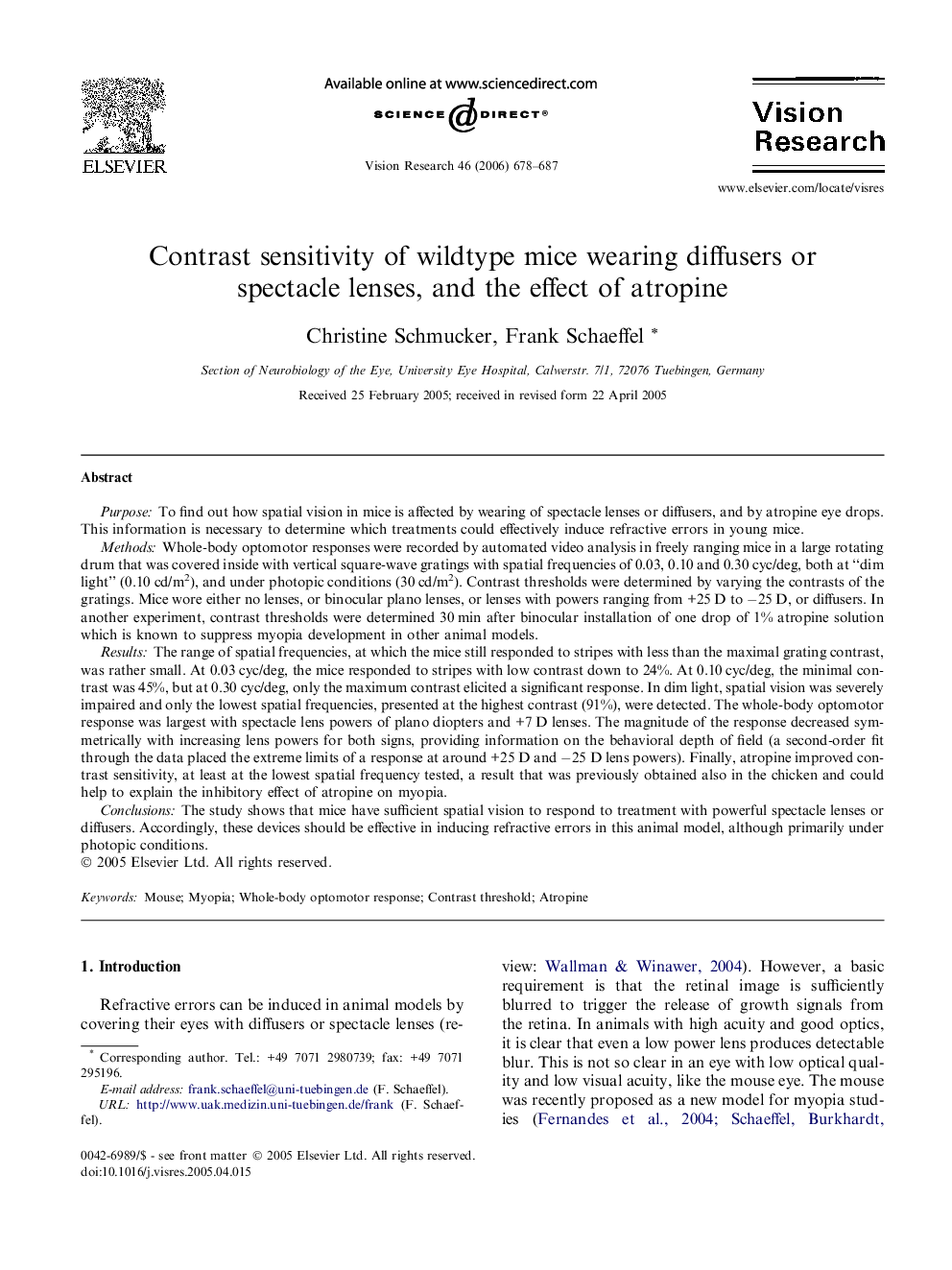| Article ID | Journal | Published Year | Pages | File Type |
|---|---|---|---|---|
| 4035832 | Vision Research | 2006 | 10 Pages |
PurposeTo find out how spatial vision in mice is affected by wearing of spectacle lenses or diffusers, and by atropine eye drops. This information is necessary to determine which treatments could effectively induce refractive errors in young mice.MethodsWhole-body optomotor responses were recorded by automated video analysis in freely ranging mice in a large rotating drum that was covered inside with vertical square-wave gratings with spatial frequencies of 0.03, 0.10 and 0.30 cyc/deg, both at “dim light” (0.10 cd/m2), and under photopic conditions (30 cd/m2). Contrast thresholds were determined by varying the contrasts of the gratings. Mice wore either no lenses, or binocular plano lenses, or lenses with powers ranging from +25 D to −25 D, or diffusers. In another experiment, contrast thresholds were determined 30 min after binocular installation of one drop of 1% atropine solution which is known to suppress myopia development in other animal models.ResultsThe range of spatial frequencies, at which the mice still responded to stripes with less than the maximal grating contrast, was rather small. At 0.03 cyc/deg, the mice responded to stripes with low contrast down to 24%. At 0.10 cyc/deg, the minimal contrast was 45%, but at 0.30 cyc/deg, only the maximum contrast elicited a significant response. In dim light, spatial vision was severely impaired and only the lowest spatial frequencies, presented at the highest contrast (91%), were detected. The whole-body optomotor response was largest with spectacle lens powers of plano diopters and +7 D lenses. The magnitude of the response decreased symmetrically with increasing lens powers for both signs, providing information on the behavioral depth of field (a second-order fit through the data placed the extreme limits of a response at around +25 D and −25 D lens powers). Finally, atropine improved contrast sensitivity, at least at the lowest spatial frequency tested, a result that was previously obtained also in the chicken and could help to explain the inhibitory effect of atropine on myopia.ConclusionsThe study shows that mice have sufficient spatial vision to respond to treatment with powerful spectacle lenses or diffusers. Accordingly, these devices should be effective in inducing refractive errors in this animal model, although primarily under photopic conditions.
